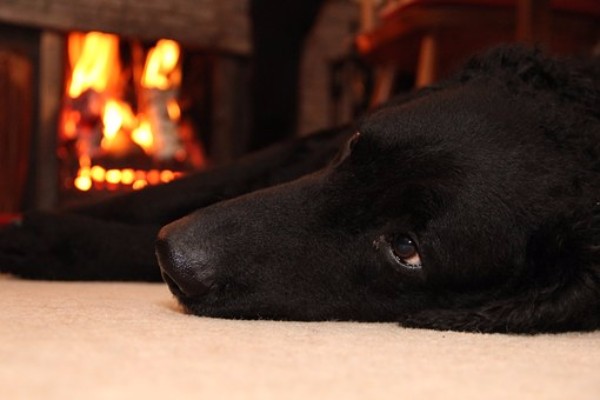
Published: 29 July 2021
Hopefully most burns are preventable, and you can find out more about accident prevention on our First Aid for Dogs course. However, here's some pointers as to how to deal with burns should your dog suffer one.
Dogs with first-degree burns will show the usual signs of pain, but the skin will still be intact. Second-degree and third-degree burns, on the other hand, are far more serious, as the skin is either partly or completely burned through. In these cases, check for signs of shock as well as for burn damage.
Primary Cause
Burns are primarily caused by one of three things: chemicals, electricity, or heat from liquids or hot objects. It is essential to quickly ascertain the cause of the burn so that it can be appropriately treated.
Immediate Care
The primary rule with burns of any kind is never put ointment, creams, butter, or margarine on them -- it does not help. For burns treatment takes the following forms:
1. Burns from liquids or hot objects
Restrain the dog and cool the burned area as quickly as possible. You can do this with a gentle stream of cold water in the bath or from a shower attachment. The quicker you cool the area, the less damage will be done. This should be done for at least 10 minutes.
Once the area has been flushed with water, cover the area with a non adherent dressing or cling film. Contact your vet for advice on further treatment.
2. Chemical burns
Wearing rubber gloves to avoid being burned, remove any contaminated collars, clothing, or harness. Flush the affected area with cold water for 20 minutes, making sure you don’t spread the chemicals and burn other areas.
If the burn is in the mouth, lie the dog on their side and pour cool water through the mouth a cupful at a time or use a garden hose for a constant, cool flow. Once flushed with water, cover superficial burns with a non-stick bandage and contact your vet for advice on further treatment.
3. Electrical burns
Burns from electrical equipment or power cords can be treated in the same way as liquids or hot objects (see point one, above). However, before touching the dog or surrounding cables, make sure that the electricity is turned off and unplug the equipment.
We hope you'll never have cause to need this advice but, unfortunately, accidents do happen. If you'd like to know what to do in an emergency, book a place on our First Aid for Dogs course. We've dates coming up in Brighton, via Zoom and our online distance learning course.
Search archive by keyword...